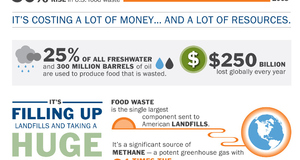Featured Opinion:Asceticism in the Modern World: The Religion of Self-DeprivationAccording to Bynum, there are two separate types of ascetic: natural and miraculous. Anorexia would be an example of the natural, which is defined as being pathological. Whilst the miraculous is supernaturally produced; partaken in for religious reasons or as a spiritually-focused form of abstention6. The women of antiquity most consistently fall under the miraculous heading. Females today, even though the miraculous undoubtedly still exists, are understood as natural ascetics. Pre-modern women were less likely to be documented as naturally abstaining, on the most part, because the doctors of the time were both dubious to cure such a materialistic illness and less likely to diagnose a woman in the first place. We can attribute such treatment to medieval thoughts on gluttony. If a woman was gluttonous, oft pegged as the most terrible of the sins, she was shameful and scandalous. It was something women were warned against and encouraged to feel guilty about, much like they are within the contemporary bubble of popular culture. So when these sick individuals arrived at church looking for aid, priests were hesitant to offer a cure. Even their communities offered no such sympathy, seeing the behaviour as attention-seeking and suicidal. Women such as Catherine of Genoa and Columba of Rieti were documented as licking dirty dishes, drinking vinegar and hoarding food, even though they denied feeling hungry. Elizabeth of Hungary fed others frantically and obsessively and, like modern anorexics, gained attention by inquiring into the source of every morsel of food. Many expressed that they were unworthy to eat7.It is evident that both cultural and religious opinion influenced the eating habits of medieval women, much like popular culture, or societal archetypes, affect female consumption today. Furthermore, when we look at the history more closely, it could be suggested that these women were trying to reverse their ordinary cultural role of food preparers; manipulating their own bodies, their families, their religious superiors, and even God himself8. This is a startling parallel to the desperation in anorexic women to reverse their cultural role of, well, the woman; seeking a pre-pubescent body, bidding farewell to regular menstruation, manipulating themselves to fit the media archetype. In other words, they took, and are taking back control in a world where they have none. It seems quite evident, then, that asceticism has lasted into modernity and certainly has a place in it. But it is still unclear whether it is identical to that of antiquity, or something new altogether. So, let us look at specific similarities in the modern world. In reference to the miraculous strain of fasting, although not as rife, it does still occur. The plethora of Christian dieting manuals on the market are evidence of such. One only has to click through a search on Amazon to see that there are not few, but hundreds of books, all seeking modern female readers looking for a God-approved road to asceticism. Patricia Kreml, author of Slim for Him, relates the dangers of overeating to the disobedient appetite of Eve9. And Gwen Shamblin, in Rise Above, insists that fat not only displeases the Lord, but indicates an underlying spiritual problem: an inability to give oneself to Him10. Such a trend is not only evident within the publishing industry. The church itself has taken notice of consumer interest, forming help groups for religious individuals in need of weight-loss. Some church-based ascetic workshops encourage believers to see connections between their slavery to food and the Hebrews' bondage in Egypt; between their desire to be thin and the broader Christian story of sacrifice and redemption11. An example of the enormity of these contemporary concerns can also be seen through the weight-control efforts of Women Aglow, the largest women’s evangelical organization in the world. For these women, overeating is both sin and sickness, construed as gluttony and rebellion against authority. A slender figure, therefore, is the epitome of a woman’s obedience to God's Word12. There is also significant evidence amongst such groups, of a commonality in religious motifs between the present and antiquity: ultimate, pure, total, perfection. As for the secular similarities to pre-modernity, the secular strain of fasting is probably, but not exclusively, more accessible to the majority. Asceticism in the form of anorexia is most prominent within the secular demographic. But the sense of alienation and separation from the body expressed by people with eating disorders is also paralleled in the female saints of antiquity. When individuals express an inability to take control of their desires, for their favourite foods, or to conform to a dieting programme, they experience feelings of guilt, shame, self-loathing and exasperation. This sounds very similar to the religious guilt felt in times gone past. Further similarities are seen, though slightly obscurely, through the profit-hungry philosophy of the modern consumer capitalist. The dieting industry is both ubiquitous and all-seeing, replacing the Christian creator as the mystical authority; the goal for the modern ascetic to reach. With its new quasi-religiosity, it is therefore unsurprising that these businesses have carefully incorporated religion into their advertising campaigns. For example, as Grummet writes in Food and Theology, the Kellogg brothers promoted the image of Sister Ellen White with their cornflakes; a religious virtuosi who had preached about abstaining from meat13. However, despite such antique religious connections, there are also some notable differences in modern ascetic practice. Clifford Geertz cites the difference between ascetic fasting, like that of the medieval era, and dieting to illustrate the distinction between religious and secular behaviour. ‘Whereas weight reduction aims to achieve a finite or conditioned goal, religious asceticism seeks to attain an unconditioned end’14. The dieting we practice contemporarily is tied to the material world. Simply the way we look. Aesthetics. Ascetic fasting, on the other hand, has meaning on a higher plane; there is reference to a higher power, or reason for existence. Having such a control over one’s body also provides an innate fulfilment, power, freedom and triumph that was seldom applauded in antiquity, but is often heralded today. This control can open doors to a personal spirituality, something that boasts a more ambiguous and subjective element, than the religion that was rife before15. Anorexia and dieting thus exhibit some elements of antiquated asceticism, with their careful attention to ingestion, and accompanying withdrawal from society. They deny the flesh; we see this through abstinence from personal fleshly desires, but also in the rejection of literal flesh: womanly curves and menstruation. There is guilt. And loathing. And connotations of purification through purging, bulimia and bingeing, much as we saw with Catherine of Genoa or Columba of Rieti. We even witness the desperation to create an ethereal-like body, before as preparation for the ascent to the kingdom of God, and now to prepare for society’s judgement. But although we have seen that self-denial in the form of food consumption still exists in our modern day, it is obvious that the spiritual form of asceticism, pertaining to God and access to His kingdom, creating a positive out of austerity, is no longer present and is instead replaced by the hurt and harm of the eating disorder. So can we call this asceticism? To refer to our original definition, ‘self-denial as a measure of personal discipline’, we can see that yes, technically, asceticism it is. But the gains are minimal and the pain for no avail, to play devil’s advocate, other than selfish aesthetics. For me, when discipline descends to disease, and asceticism arrives at illness, we cannot call it asceticism at all. But then one could argue, was this even asceticism in the first place? Academically speaking, it seems that it was. So maybe we must accept this harsh reality: that asceticism is illness’ transparent mask; that it always was, and it always will be, even in the freedom and liberality of our great modernity.Continued on Next Page » Suggested Reading from Inquiries Journal
Inquiries Journal provides undergraduate and graduate students around the world a platform for the wide dissemination of academic work over a range of core disciplines. Representing the work of students from hundreds of institutions around the globe, Inquiries Journal's large database of academic articles is completely free. Learn more | Blog | Submit Latest in Opinion |
















